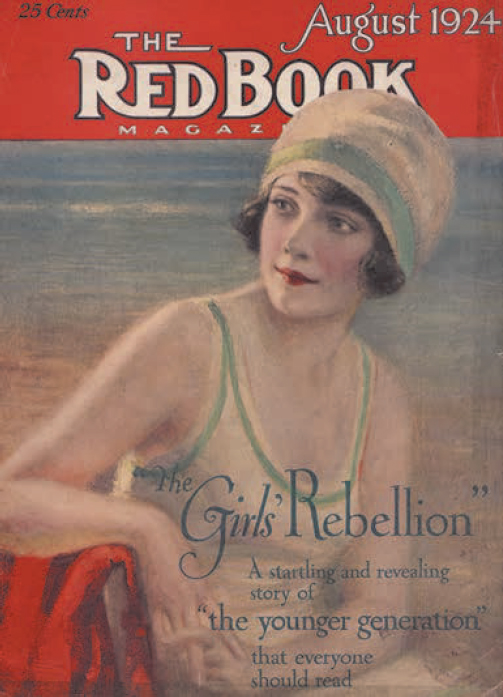In what ways did the Roaring Twenties challenge traditional values?
Printed Page 685

Figure false: “The Girls’ Rebellion”
Figure false: The August 1924 cover of Redbook, a popular women’s magazine, portrays the kind of postadolescent girl who was making respectable families frantic. Flappers scandalized their middle-class parents by flouting the old moral code. This young woman sports the “badges of flapperhood,” including what one critic called an “intoxication of rouge.” Fictionalized, emotion-packed stories such as this brought the new woman into every woman’s home. Picture Research Consultants & Archives.
A NEW ETHIC OF PERSONAL FREEDOM excited many Americans to seek pleasure without guilt in a whirl of activity that earned the decade the name “Roaring Twenties.” Prohibition made lawbreakers of millions of otherwise decent folk. Flappers and “new women” challenged traditional gender boundaries. Other Americans enjoyed the Roaring Twenties through the words and images of vastly expanded mass communication, especially radio and movies. In America’s big cities, particularly New York, a burst of creativity produced the “New Negro,” who confounded and disturbed white Americans. The “Lost Generation” of writers, profoundly disillusioned with mainstream America’s cultural direction, fled the country.
CHRONOLOGY
1920
- – Warren G. Harding is elected president.
1922
- – Teapot Dome scandal.
- – Five-Power Naval Treaty.
1923
- – Harding dies; Vice President Calvin Coolidge becomes president.
1924
- – Dawes Plan.
- – Coolidge is elected president.
1928
- – Kellogg-Briand pact.
1929
- – Publication of Middletown.